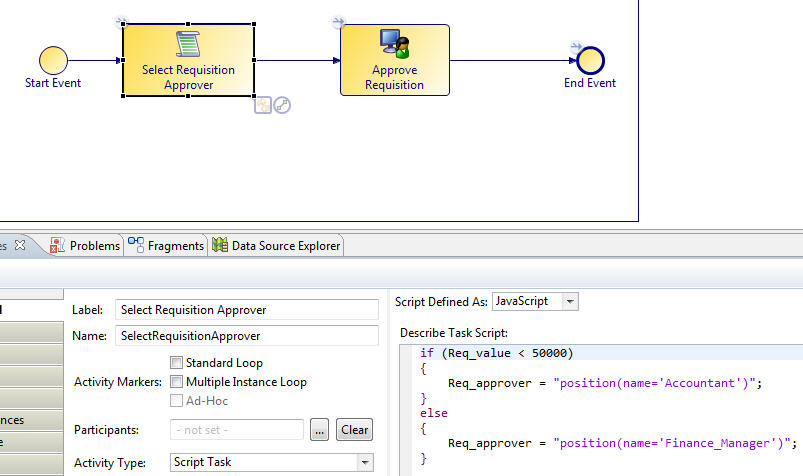Using a Performer Data Field or Parameter to Dynamically Define a Participant
A performer data field/parameter is a special type of data field/parameter that you can select as a participant for a user task. By assigning a value to the performer data field/parameter earlier in the process, you can dynamically define a participant for a user task. You can populate a performer data field/parameter with one or more organization entity GUIDs, or a single valid non-array RQL expression.
Using a performer field, you can deliver work dynamically to an organizational entity, so that the work items appear in managed work lists. For example:
- Dynamically deliver to a group by name (e.g. using an organization entity GUID: Process.getOrgModel().groupByName('MyGroup') )
- Dynamically deliver to a position within an organization unit by name (for example: orgunit(name='KEYTeam').position(name='AdditionalStaff') union orgunit(name='Agency').position(name='Contractor') )
Note: You can also use non-RQL scripting to identify dynamic performers. For example:
performer=Process.getOrgModel().getGroupByName('MyGroup').
Note: If you use the presentation channel settings (push destinations) to deliver notification of work items via email, on the Work Resource tab for the user task, you must set the Distribution Strategy to
Allocate to One rather than
Offer to All. For example, if you have a performer field set to:
resource(name='tibco-admin'),
tibco-admin will receive an email notification of a work item
only if the Distribution Strategy is
Allocate to One.
Procedure
Copyright © Cloud Software Group, Inc. All rights reserved.

